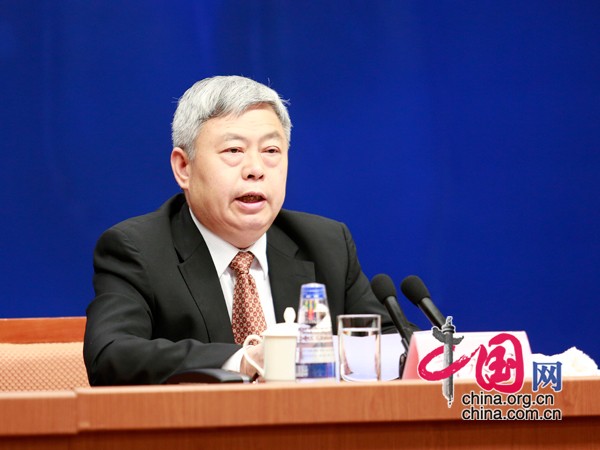Official: Integrating agriculture-related funds for poverty relief
chinagate.cn by Zhang Ling, May 19, 2016 Adjust font size:
|
|
|
Liu Yongfu, director of the State Council Leading Group Office of Poverty Alleviation and Development [Photo by china.org.cn] |
“In the years to come, the remaining poverty-stricken population will be the most disadvantaged, and it will take stronger efforts to lift them out of poverty than ever before,” pointed out Liu Yongfu, director of the State Council Leading Group Office of Poverty Alleviation and Development, adding that poverty alleviation should be carried out more intensively, and that the key is to follow the right strategy to make targeted efforts to help the truly needy rather than make little use of the available resources, reported Economic Daily.
In the long combat against poverty, there is a hidden rule. In the very first year after a new poverty line is settled, the population lifted out of poverty is quite large, the next year sees less people taken out of poverty. As a result, the number of people rising out of poverty lowers annually. Liu also said, “Last year, we made great efforts and broke this rule. In 2013, the national population lifted out of poverty was 16 million, the number stood at 12 million in 2014, and it reached 14 million in 2015, which proves that the rule can be broken.”
How can China make full use of the Poverty Alleviation Fund (PAF)? Liu analyzed that many agriculture-related funds, except the PAF, have benefited villagers and villages at large. “But some funds allocated to various institutions are playing different roles. In the critical stages for targeted poverty alleviation, we have come to realize that some agriculture-related funds cannot be used in pro-poor programs. As a result, each of us cannot reach our goals, and the money spent gets us nowhere.”
According to Liu, agriculture-related special funds are 10 times as much as the PAF. Apart from the funds for major agricultural infrastructure construction that cannot be used otherwise, half of the agriculture-related funds can be maximized for multiple purposes. “In other words, the agriculture-related funds are 5 times as much as the PAF and can be used in targeted poverty reduction,” Liu said, also asserting that the State Council would issue policies to integrate these funds. “Despite the tough tasks, we will exert all efforts to take advantage of the agriculture-related funds to help the needy rise from poverty.”
Statistics show that more and more social forces have engaged in poverty alleviation. As far as fundraising activities are concerned, 5 billion yuan (U.S. $773 million) was raised in 2014, while the money raised doubled in 2015 reaching 10 billion yuan (U.S. $1.5 billion). “We expect more people to join fundraising this year, and it might reach 20 billion yuan (U.S. $3 billion),” said Liu.
